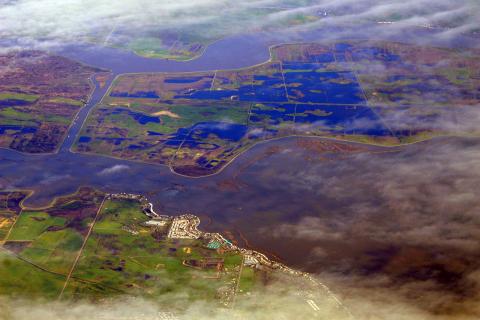Delta
A river delta is a landform that forms from deposition of sediment carried by a river as the flow leaves its mouth and enters slower-moving or standing water. This occurs where a river enters an ocean, sea, estuary, lake, reservoir, or (more rarely) another river that cannot transport away the supplied sediment. The size and shape of a delta is controlled by the balance between watershed processes that supply sediment and receiving basin processes that redistribute, sequester, and export that sediment.[3][4] The size, geometry, and location of the receiving basin also plays an important role in delta evolution. River deltas are important in human civilization, as they are major agricultural production centers and population centers. They can provide coastline defense and can impact drinking water supply.[5] They are also ecologically important, with different species assemblages depending on their landscape position.

